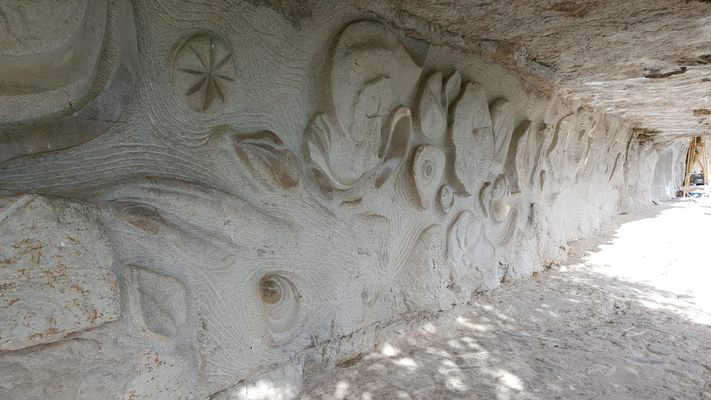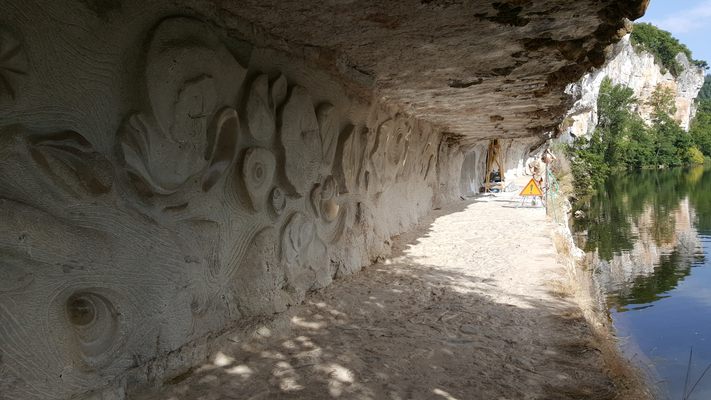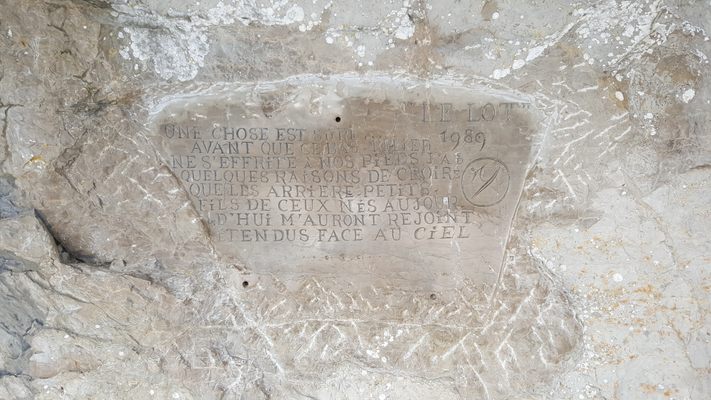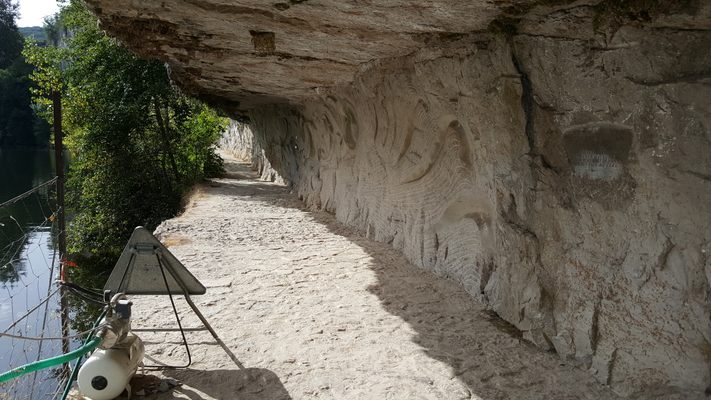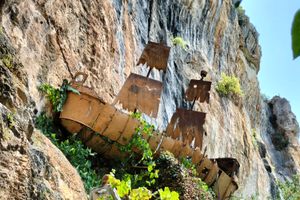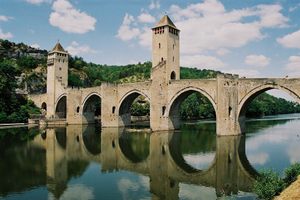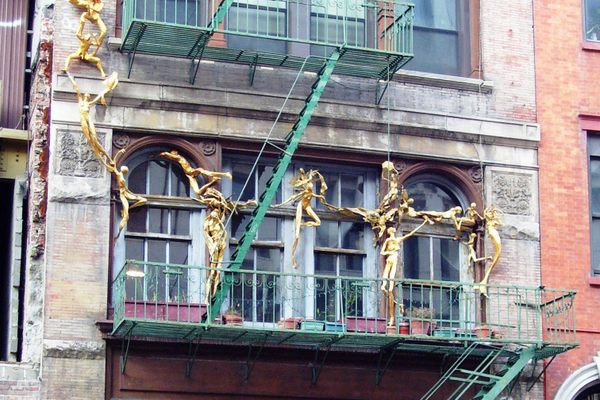About
On a hidden towpath cut into a cliff along the Lot River, an unsigned bas-relief surprises hikers walking between the small villages of Saint-Cirq-Lapopie and Bouziès, in southwestern France. Carved directly into the rock, the relief was designed to merge seamlessly with the surrounding scenery and features ripples and shells, a three-foot-tall fish, and a small falcon.
For years, some hikers assumed the artist had died or mistakenly attributed the sculpture to André Breton, the cofounder of Surrealism who had owned a house nearby, or even linked it to the prehistoric drawings in the Perch Merle Caves less than two miles away.
But in 2018, over 30 years after the first part of the bas-relief was finished, the sculptor, Daniel Monnier, returned to the area and was invited to finish the last piece of his work, a polished stone “mirror” designed to reflect the water and sky.
Located in the Lot Valley, the towpath was carved between 1843 and 1847. For 30 years, horses and humans used the path to pull flat-bottomed commercial barges, called gabarres, up the river toward Bordeaux, at least until the railroad came to town and commercial shipping on the river was halted.
In 1984, Monnier had stumbled onto the path and convinced local authorities to let him carve a bas-relief into the stone. When he began, the towpath was so deserted he could camp there. By the time he returned to finish it 30 years later, it had become so popular with tourists—43,000 people walked along the path between June and November of 2018—that he decided to work at night to avoid the crowds.
Related Tags
Published
January 14, 2020
